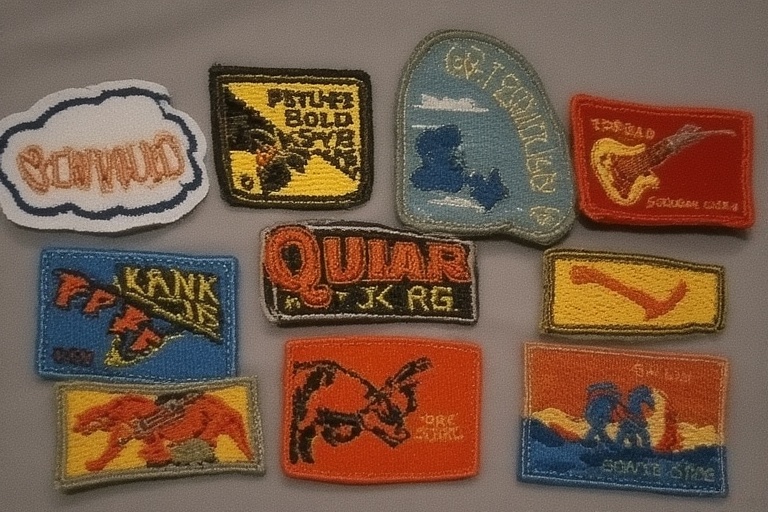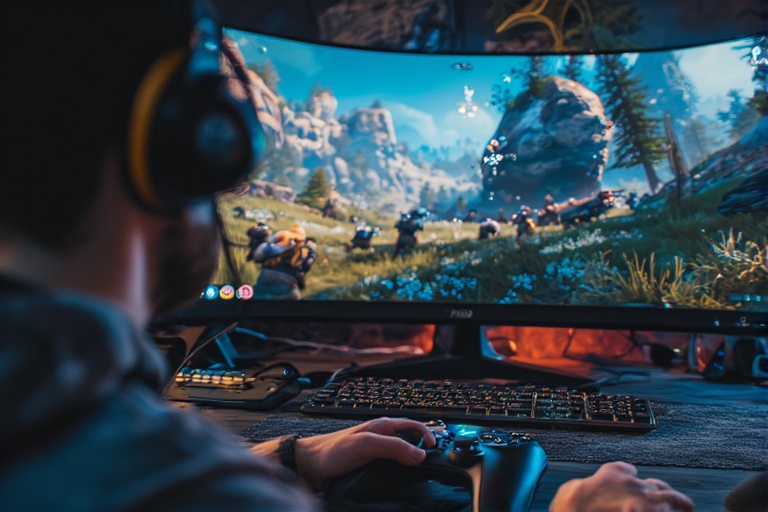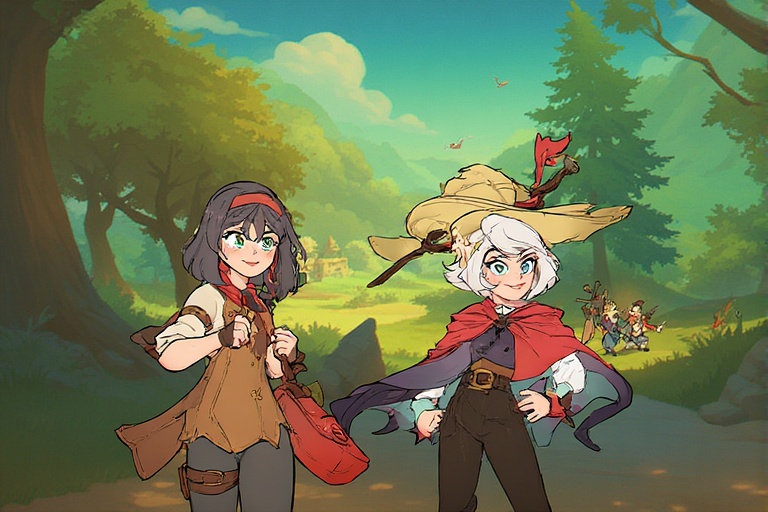
The Art of Animation
Animation breathes life into stories, shaping them into vibrant moving pictures that captivate viewers across ages. From hand-drawn frames to cutting-edge CGI, the art of animation fuses creativity, technology, and storytelling into a mesmerizing craft. Animation isn’t merely about cartoons; it’s a powerful medium capable of expressing emotions, ideas, and cultures. Moreover, it bridges entertainment, education, and marketing in ways few other art forms can achieve. This article dives deep into the fascinating world of animation, exploring its history, diverse techniques, influential artists, and its booming industry. Join us as we unravel how the art of animation remains a thriving force, inspiring creators and delighting audiences worldwide.
A Historical Overview of the Art of Animation
The art of animation traces its origins back to ancient times. Early humans carved sequential images into walls to depict motion, hinting at our innate fascination with moving pictures. However, animation truly found its identity in the late 19th and early 20th centuries. Devices like the zoetrope and the phenakistoscope allowed people to glimpse moving images for the first time. These inventions paved the way for pioneers like Émile Cohl, who created one of the earliest animated films, Fantasmagorie, in 1908. Each development contributed to the evolution of animation, laying a solid foundation for future creators to build increasingly sophisticated techniques.
Hand-Drawn Animation: The Classic Core of the Art of Animation
Hand-drawn or traditional animation remains a cherished cornerstone of the art of animation. In this process, animators sketch thousands of individual frames, each slightly different from the previous one. When played in sequence, these images create fluid motion. Studios like Walt Disney revolutionized this art form, producing classics such as Snow White and the Seven Dwarfs. The meticulous attention to detail, vibrant artistry, and storytelling depth made traditional animation a cultural treasure. Even in an era dominated by digital tools, many artists still practice hand-drawn techniques, celebrating the craft’s tactile beauty and authentic charm.
The Rise of Computer Animation in the Art of Animation
The arrival of computers transformed the art of animation forever. In the 1990s, studios like Pixar harnessed computer-generated imagery (CGI) to craft visually stunning films such as Toy Story. Unlike traditional techniques, computer animation involves manipulating digital models in a virtual space. Artists adjust lighting, textures, and camera angles to create lifelike visuals. Moreover, this approach allows for dynamic storytelling possibilities, expanding the animator’s creative toolkit. Today, CGI dominates feature films, TV shows, and video games, elevating storytelling to extraordinary new heights. However, artists still infuse these digital projects with the heart and soul essential to compelling animation.
2D vs. 3D Animation: Techniques That Shape the Art of Animation
Two primary techniques define the modern art of animation: 2D and 3D animation. Each style brings its unique charm and storytelling advantages.
2D animation retains a flat aesthetic, utilizing digital tools to replicate traditional hand-drawn styles. Popular shows like The Simpsons and Rick and Morty rely on this technique for its speed and artistic versatility.
In contrast, 3D animation creates lifelike characters and environments, adding depth and realism. Films like Frozen or Despicable Me showcase how 3D animation can blend comedy, drama, and action seamlessly. Animators choose techniques based on a project’s tone, audience, and budget, ensuring that the art of animation continues evolving in vibrant new directions.
Stop Motion: A Unique Craft within the Art of Animation
Stop motion offers a tactile, magical quality to the art of animation that few other methods achieve. This technique involves capturing physical objects or puppets one frame at a time. Animators subtly adjust the objects between shots, creating an illusion of fluid movement. Studios like Laika, responsible for masterpieces like Coraline and Kubo and the Two Strings, excel in stop motion. Each frame demands patience and precision, often taking months or years to complete a single feature. Despite the labor-intensive process, stop motion continues to captivate audiences with its handcrafted aesthetic and enchanting storytelling power.
The Art of Animation in Anime: A Distinct Visual Language
Anime represents a vibrant slice of the art of animation, captivating audiences worldwide with its distinctive style. Originating in Japan, anime combines striking character designs, expressive facial features, and elaborate storytelling. Unlike Western cartoons, anime often explores mature themes, complex emotions, and philosophical questions. Series like Attack on Titan or Demon Slayer demonstrate how anime pushes artistic boundaries, blending fluid action with profound narratives. Moreover, anime’s visual storytelling and unique aesthetics influence fashion, art, and pop culture globally. The global success of anime highlights how the art of animation transcends cultural borders, uniting fans through universal storytelling.
Visual Effects and the Art of Animation: Crafting Cinematic Magic
Beyond traditional films, the art of animation plays a crucial role in visual effects (VFX). Modern blockbusters rely heavily on digital artistry to create fantastical creatures, explosive battles, and otherworldly landscapes. Animation teams seamlessly integrate these digital creations into live-action footage, maintaining believability and immersion. Movies like Avengers: Endgame showcase how the art of animation elevates cinematic storytelling to thrilling new heights. Additionally, VFX artists collaborate closely with directors and cinematographers to ensure their animations align with a film’s vision. Consequently, the marriage between animation and live-action continues transforming the entertainment landscape, captivating audiences with jaw-dropping spectacles.
Animation in Gaming: A Growing Frontier of the Art of Animation
The gaming industry stands as another vibrant frontier for the art of animation. Animated characters, environments, and visual effects bring immersive virtual worlds to life. Whether crafting realistic human movements or fantastical creatures, animators play a vital role in shaping gaming experiences. Studios invest heavily in motion capture and advanced rigging techniques to ensure lifelike character actions. Games like The Last of Us Part II or Horizon Forbidden West demonstrate how animation fuels both gameplay and storytelling. The fusion of interactivity and animation creates unparalleled engagement, proving that the art of animation thrives beyond traditional cinema or television.
Storytelling and the Emotional Power of the Art of Animation
At its core, the art of animation excels in storytelling. Animated films and series capture emotions in ways that resonate deeply with audiences. Through carefully timed movements, expressive facial gestures, and nuanced voice acting, animators infuse characters with genuine life. Whether delivering humor, sorrow, or wonder, animation can evoke powerful emotional responses. Moreover, the medium allows storytellers to explore abstract ideas, fantastical worlds, and surreal scenarios impossible in live-action. Consequently, animation remains an essential tool for communicating complex narratives and universal human experiences, making the art of animation both timeless and ever relevant.
The Role of Music and Sound in the Art of Animation
Sound design and music play indispensable roles in the art of animation. A soaring orchestral score can heighten drama, while comedic sound effects punctuate humorous moments. Studios like Disney and Pixar invest significant effort into crafting musical accompaniments that resonate emotionally. Think of songs from The Lion King or Frozen, which became cultural touchstones thanks to their memorable melodies. Additionally, voice acting breathes unique personalities into animated characters, enriching storytelling further. Sound designers meticulously synchronize effects to match on-screen actions, ensuring a seamless experience. Ultimately, the art of animation thrives on this intricate marriage between visuals and sound.
Animation as a Powerful Tool for Education and Communication
The art of animation extends far beyond entertainment, serving as a powerful educational and communication tool. Educational videos often use engaging animated visuals to simplify complex concepts. Platforms like YouTube host countless explainer animations covering topics from science to history. Moreover, animation assists businesses in crafting compelling marketing messages, transforming abstract ideas into digestible content. Nonprofits leverage animation to raise awareness for social causes, reaching broader audiences. Animation’s clarity and universal appeal make it an ideal medium for teaching, persuading, and inspiring. Thus, the art of animation continually shapes how we share knowledge and spark change.
Pioneers and Influencers in the Art of Animation
Throughout history, visionary artists have shaped the art of animation into the sophisticated craft we know today. Walt Disney revolutionized the industry with innovations like synchronized sound and the first full-length animated feature. Meanwhile, artists like Hayao Miyazaki elevated animation into poetic art with films such as Spirited Away. Studios like Pixar, DreamWorks, and Ghibli have consistently pushed creative and technical boundaries. Contemporary animators continue to innovate, exploring new artistic styles and experimental storytelling techniques. Each creator leaves a unique mark, ensuring the art of animation evolves, adapts, and remains a vital cultural force across generations.
Challenges Facing the Art of Animation Today
Despite its remarkable growth, the art of animation faces significant challenges. Rising production costs place immense pressure on studios to deliver commercial successes. Animators often endure grueling schedules, leading to industry-wide discussions about fair working conditions. Additionally, the increasing reliance on technology creates a risk of overshadowing artistic authenticity. Audiences crave innovative storytelling and emotional depth, not merely dazzling visuals. Moreover, rapid shifts in consumer habits, such as streaming services, reshape how animated content reaches viewers. Nonetheless, creators remain resilient, adapting to new realities while keeping the art of animation vibrant, relevant, and creatively fearless.
The Future of the Art of Animation: Endless Possibilities Ahead
The future shines brightly for the art of animation. Emerging technologies like virtual reality (VR), augmented reality (AR), and artificial intelligence promise fresh frontiers for storytelling. Animators are experimenting with real-time rendering, allowing for faster production and interactive narratives. Meanwhile, indie creators harness social media to share their animated shorts, gaining global recognition. Animation’s democratization empowers diverse voices to enter the industry, fostering unprecedented creative diversity. As audiences crave innovative content, the art of animation stands poised to redefine entertainment, education, and communication in unimaginable ways. The only limit remains the boundless human imagination.
Conclusion: Embrace the Magic of the Art of Animation
The art of animation is more than moving pictures—it’s a vibrant fusion of creativity, technology, and storytelling that transcends boundaries. From the delicate beauty of hand-drawn frames to the awe-inspiring realism of CGI, animation continues to evolve, captivating audiences worldwide. Whether it’s shaping blockbuster films, immersive games, educational tools, or cultural phenomena, animation holds a unique power to connect people emotionally and intellectually. Now is the perfect time to explore, learn, and even create within this exciting field. Embrace the magic of the art of animation, and discover the endless stories waiting to come alive.
Meta Description
Explore the art of animation in depth! Discover its history, techniques, influential artists, and future trends. Uncover how the art of animation shapes storytelling, entertainment, and culture.
FAQs about the Art of Animation
What is the art of animation?
The art of animation involves creating moving images through techniques like hand-drawn frames, computer graphics, or stop motion. It’s used in films, games, advertising, and education to tell compelling stories.
Why is the art of animation important?
The art of animation captivates audiences with visual storytelling. It combines artistry, technology, and emotion, influencing culture, entertainment, and education across the globe.
What are the main types of animation?
Major types include 2D animation, 3D animation, stop motion, and visual effects. Each method offers unique ways to bring characters and stories to life in the art of animation.
How has technology changed the art of animation?
Technology revolutionized the art of animation by enabling CGI, real-time rendering, and virtual production. Animators now create complex visuals faster, opening new storytelling possibilities.
Can I learn the art of animation as a beginner?
Absolutely! Many online courses and software tools help beginners explore the art of animation. Starting small with simple projects builds skills and creativity over time.
Ready to dive deeper into the art of animation? Start your journey today—learn, create, and bring your imagination to life!






